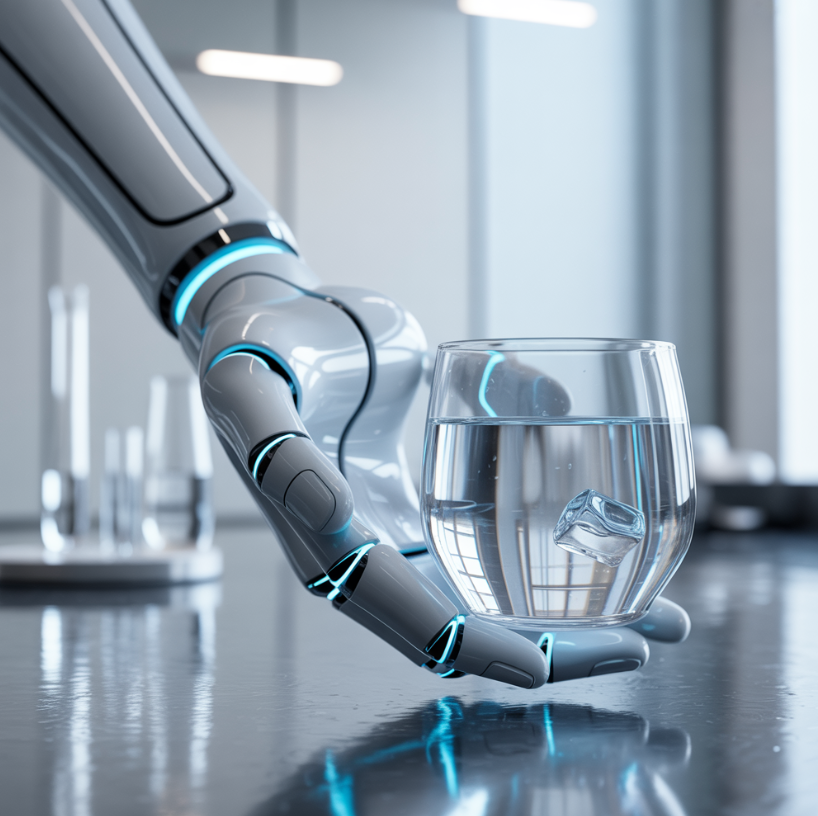
🦾 Robotics & Prosthetics: Muscle-Like Motion Through Flux-Driven Actuation
Robotics and prosthetics are reaching a pivotal moment. Artificial limbs are becoming lighter and more adaptive; robots are leaving factories to work in homes, hospitals, and fields. Yet one persistent obstacle continues to shape every design decision: energy use.
Conventional electric actuators consume continuous current just to hold position, generate excess heat during fine control, and struggle to replicate the graceful precision of biological muscles.
Magnetic diodes redefine this landscape.
By steering magnetic flux instead of constantly pushing current, flux-driven actuators achieve standby holding torque with almost no power draw. They enable smooth, muscle-like motion without the inefficiency and noise that limit today’s designs. The result is robotic systems that last longer on a battery, prosthetics that feel natural to the wearer, and actuators that bring new realism to human-machine interaction.
🧲 Flux-Driven Precision
At the heart of this shift is Dynamic Flux Control made possible by magnetic diodes:
- Zero-power hold → flux pathways “lock” into position magnetically, eliminating the need for continuous standby current.
- Smooth actuation → controlled steering of flux provides gradual, muscle-like motion instead of abrupt, stepwise jumps.
- Cool running → minimal energy loss means actuators run silently and without thermal buildup.
- Scalable design → the same principle applies from micro-scale surgical robots to full-scale exoskeletons.
These features give engineers a completely new toolset — actuators that work with magnetic fields rather than fighting against them.
⚡ Why It Matters for Robotics & Prosthetics
Institutions leading in robotics know that efficiency and realism are the next frontiers. Magnetic diodes bring key advantages:
- Prosthetics with all-day power Devices that can hold grip or posture without draining batteries give users greater independence and confidence.
- Robots that run longer between charges Every watt-hour saved extends mission time, whether for a hospital assistant robot, a field survey rover, or a collaborative industrial arm.
- Smooth, lifelike motion Flux-steered actuation closely mimics the continuous, analog behavior of human muscles, enhancing natural feel and control.
- Compact form factors With less heat generation, cooling demands fall, enabling slimmer designs ideal for wearable systems.
- Durability in demanding environments Lower stress on windings and bearings translates to longer service life, critical in both medical and industrial applications.
🌍 Institutional Opportunity & Prestige
A research institute that demonstrates the first flux-driven robotic joint or prosthetic actuator will not simply publish another incremental improvement — it will claim a defining milestone in the field.
- Prestige in biomedical and robotics research → such breakthroughs would elevate institutional standing on the international stage.
- Interdisciplinary collaboration → projects would unite biomedical engineers, materials scientists, roboticists, and rehabilitation specialists.
- Global recognition → agencies funding assistive technologies, defense robotics, and healthcare innovation would look first to the pioneers of flux-actuated systems.
For a Project Director, this is an opportunity not only to solve tangible design challenges but also to shape the future narrative of robotics and human augmentation.
🚀 Toward Muscle-Like Machines
Picture:
- A prosthetic arm that can delicately hold a glass for hours without draining its power supply.
- A surgical robot capable of ultra-precise, cool-running motion during long procedures.
- An exoskeleton that provides endurance support without overheating or exhausting its battery pack..
These are not distant dreams. With magnetic diodes, they become achievable realities, ready to redefine expectations for robotics and prosthetics alike.
🌟 Conclusion
Flux-driven actuators represent a paradigm shift in how robots and prosthetics interact with the world. By eliminating standby power waste and replicating the precision of muscles, they unlock new performance, durability, and realism.
Institutions that embrace this technology will not just contribute to robotics research; they will lead it. To be the first to engineer truly muscle-like actuators powered by magnetic diodes is to stand at the forefront of human-machine innovation.
Who wouldn't want to be a part of that?
